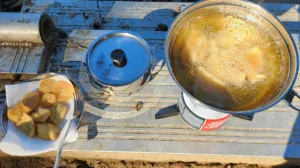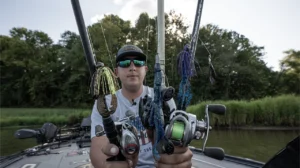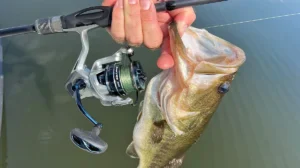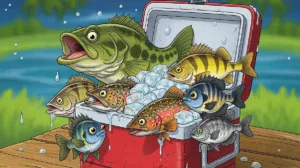Each day, we’re getting closer to a very special time of year. As the nights start getting in that magical 60-degree range, baitfish are slowly migrating towards the shallows and as you could probably guess, the bass aren’t far behind. Although we’re not in a full-swing fall pattern yet, you can probably bank on a good squarebill bite as the bass get close to cover while ambushing the migrating bait.
Squarebills, of course, closely mimic these migrating baitfish which makes ‘em a great choice for this time of year. They’re also easy to fish, which makes them a great option for anglers of all skill levels. The square-shaped bills help the lure deflect off cover which results in fewer obnoxious snags than most other bass fishing lures.
With seemingly hundreds of squarebills on the market these days, I wanted to put together a few guidelines that will help you make the best decision when you’re making your next purchase. I’m not trying to sell you anything and I won’t beat around the bush. Here are the biggest qualities I look for in a quality squarebill, regardless of the brand.

Bill-to-body connection
This is something that a lot of people overlook when choosing and testing out different squarebill crankbaits. I’m really big on this because if I’m going to spend my hard-earned money on a bass fishing lure, it better last. This is magnified even more by the nature of squarebill fishing; they’re supposed to crash and collide into hard cover, so I have absolutely no use for a fragile plug that’ll become compromised after some close combat.
This is why I pay such close attention to the bill-to-body connection. I don’t even know if that’s a real term but heck, I reckon I just made it one. When you’re looking at a squarebill in most packages, you can tell how well the bill, or lip, is connected to the body. If it has a bunch of glue all over the joint, I’m out. In most cases, I’ve learned that means the bill will snap off prematurely after a few weeks of hard use. Likewise, if there is a noticeable gap between the bill and body, I’d advise steering clear for the same reasons.
Speaking of bills, most packages will also allow you to see how straight the bill is placed on the body of the lure. Even today, I’ll go to a sporting goods store to grab a few last-minute plugs and I look like a fool holding the package up to my eye. But if you pay really close attention, you’ll notice that some squarebill lips are actually crooked. This means that no matter how much you tune that lure, it’s not going to run straight and if you finally do get it to run somewhat normal, it will probably blow out to the side if you retrieve it too quickly. So before you buy a new squarebill in a store, always inspect the bill. For whatever reason, you’ll find probably find several that are crooked and not worth the purchase.

Oval-shaped line tie
Now let me be clear in this section that this isn’t a deal breaker for me. But I wholly believe if you want to get better action out of your squarebills, an oval-shaped line tie is the way to go. Some of my favorite plugs do not come stock with this option but I don’t let that hang me up during a purchase. I keep spare oval line ties in both my boat and shop which lets me change them within seconds. With a good pair of split-ring pliers, this little modification can be done quickly and efficiently.
I also like these line ties because they make knot tying easier for me. The round line ties can get your knot caught in the “split” of the line tie which, after many casts of wiggling and wobbling, will weaken your knot and most certainly cause eventual line failure. The oval line ties, however, allow you to quickly tie whatever knot you prefer without worrying about any knot integrity issues.
Again, some of my favorite plugs don’t come with this option. So if you see a squarebill you really like on the shelf, go ahead and get it and know you can slap an oval line tie on there in just a few second.

Split rings and hooks
You’d be amazed how much thought goes into companies trying to save five cents per lure in manufacturing costs. It might be the best crankbait in the world but most often, when costs need to be cut, split rings and hooks are the first components to be downgraded. This absolutely stinks because in my opinion, they’re the most integral part of the whole lure. Who cares if you get an 8-pounder to bite your squarebill if the split rings and hooks don’t hold up, right?
This became a much bigger issue in my mind after an insane day of fishing with my wife several years ago. It was early spring and those silly hybrids were up on the flats, the breeze was perfect and I swear we caught over a hundred of them. Her ribs and forearms were sore, my hands were bleeding (every square inch of those hybrids will cut or poke you) but most importantly, we were fishing a few squarebills that were getting absolutely thrashed. It seemed like every five or six fish I was replacing split rings and treble hooks. The components of our squarebills just simply couldn’t hold up to the wrath of a 3-pound hybrid. That day got me really paranoid about my squarebills’ components.
Make absolutely certain that your squarebills have good hooks and split rings. It’s okay if they flex a little bit but you don’t want them to warp and bend; flexing a little bit is okay if they return to the original shape. If you run across a squarebill under $4, don’t be afraid to buy it. But just make sure to change the hooks and split rings before you start fishing it hard.

Find a good brown color
That’s a weird-sounding subheading, isn’t it? I know it might sound strange but I’m telling you, I believe you should always have a brown-colored squarebill rigged and ready at all times. I actually have a rod and reel combo specifically designated for a brown squarebill; nothing else goes on it. My reasoning is simple.
You would be absolutely shocked by how many one- and two-finger bluegill a bass eats throughout the day. They’re slower than shad, they hand out in the same areas bass like to hang out and they represent a substantial, calorie-rich meal. I know we’ve discussed shad and other baitfish in this article but there is not a bass on this planet that will pass on a stupid, meandering bluegill as it clumsily makes its way through cover. So make your squarebill mimic that.
I think folks can get a little too tied up when it comes to color selection because I used to be that guy. It resulted in me getting too spun out and spending too much money on colors that never really made a difference. But as I’ve matured as an angler, I’ve realized that anything brown will fool a bass into thinking it’s a bluegill. So don’t get all tweaked about finding the perfect bluegill color. If it makes you feel good and confident, go for it. But I’m telling you, anything brown will work. You can color the dang thing with a brown Crayola marker and the bass will bite it if they’re actively feeding on bluegill.
So the next time you’re shopping for a few new squarebills, pull up this article and make some mental notes. I used to make things way too complicated in my younger years but I’ve finally figured out a squarebill system that works really well. A solid bill connection, adding an oval line tie, quality components and a good ol’ brown color will open a whole new world for you.


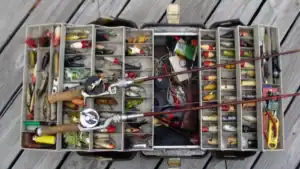
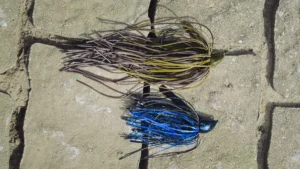
![[VIDEO] Casey Scanlon’s Go-To Trailers for Bladed Jigs](https://www.wired2fish.com/wp-content/uploads/2025/06/scanlon-trailers-300x169.webp)





